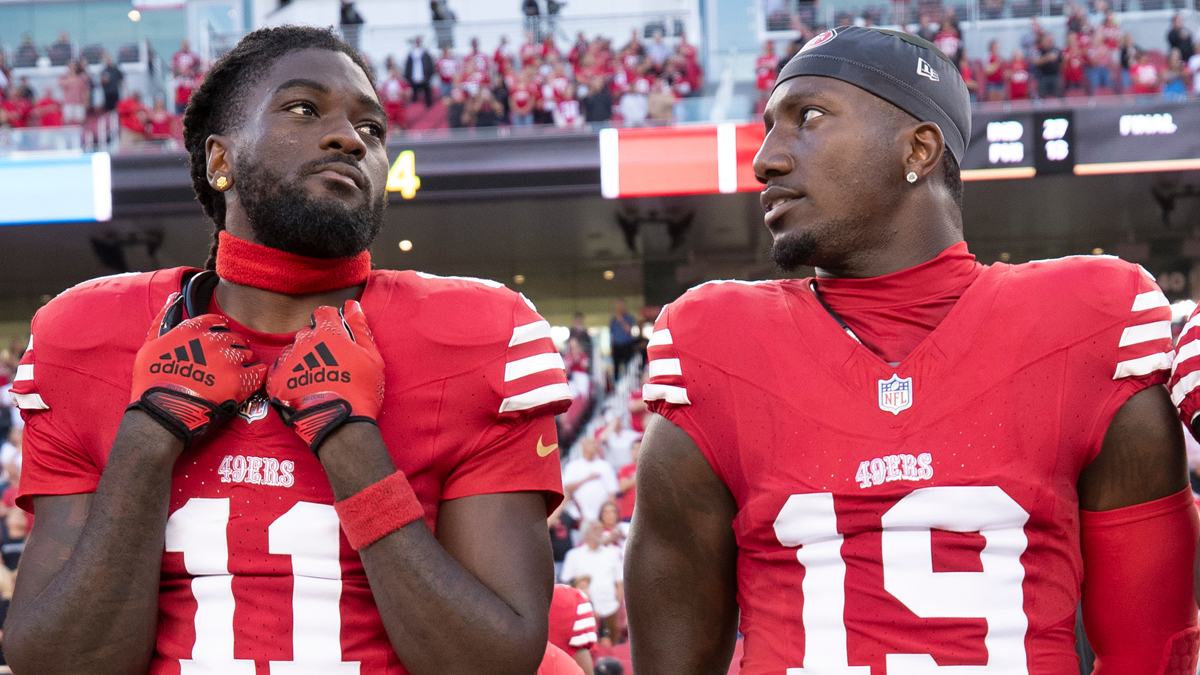When the Sharks take the ice against the Nashville Predators on Thursday night, they'll have two of the league's most productive defensemen in March in tow.
That doesn't even include Brent Burns, although the reigning Norris Trophy winner has been no slouch this month, tied for ninth in scoring (11 points) among defensemen in March. Right behind him, though, are third-pairing blueliners Dylan DeMelo (10) and Brenden Dillon (nine), tied for 14th and 16th, respectively, in defensive scoring.
You expect that from Burns, arguably the best in the world at generating offense from the blueline, but definitely you definitely wouldn't from DeMelo or Dillon. Entering this year, neither player had scored more than 17 points in a season.
Thanks to a mad March, they've both got 20 (and counting).
DeMelo's already scored as many points at even strength (eight) as he did all of last season across all situations (in 25 games), while Dillon's March output is just a point fewer than his 81-game total from a year ago. With the two on the ice together at five-on-five, the Sharks are scoring three more goals per hour in March (5.54 goals per 60 minutes) than before.
Any time you see a big spike like that, a bump in on-ice shooting percentage is usually a huge driving factor, and the Sharks have scored on 17.07 percent of their five-on-five shots with Dillon and DeMelo this month, compared to 8.16 percent entering March. But luck can only explain so much of their outburst, as the two have also been much, much more effective generating offense.
Together, they've controlled a higher share of five-on-five shot attempts (54.64 percent corsi-for) and unblocked attempts (58.1 percent fenwick-for) in March than prior (48.55 percent and 50.24 percent, respectively). They're also attempting nearly six more shots, over five more unblocked attempts, just under two-and-a-half more shots, and over five more scoring chances per hour.
Sports
Those are pretty staggering differences, and they've even tightened up in their own end, too. In March, Dillon and DeMelo are allowing almost eight fewer attempts per hour, just under eight fewer unblocked attempts, just over eight fewer shots, and about six-and-a-half fewer scoring chances per hour than before this month.
San Jose surely won't continue to score on nearly a fifth of the shots with the two on the ice. But, if Dillon and DeMelo's two-way improvement sticks, they'll have a trustworthy, capable third pairing headed into the postseason.
That's an important development headed into the postseason, where depth is the difference and mismatches are magnified. The Sharks saw that firsthand in the 2016 Stanley Cup Final when the Penguins exposed Dillon and then-partner Roman Polak.
As long as Dillon and DeMelo continue to push play in a positive direction, there won't be any reason to fear history repeating itself.



